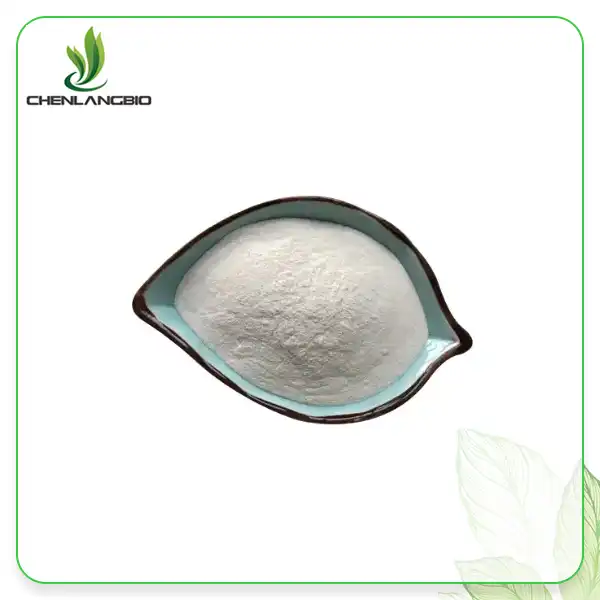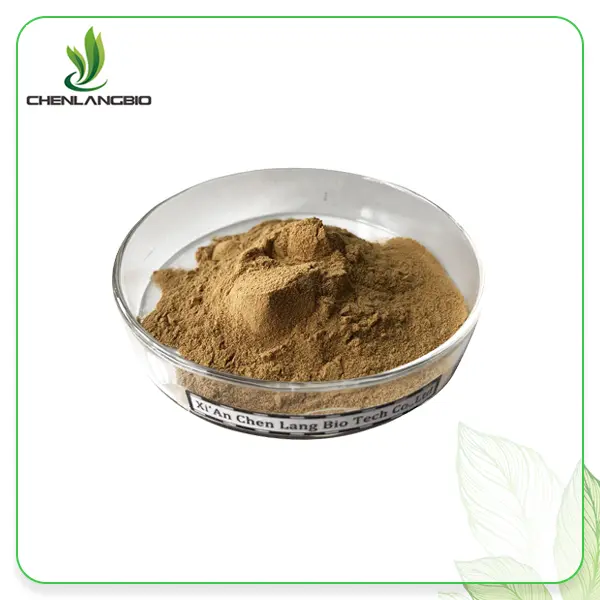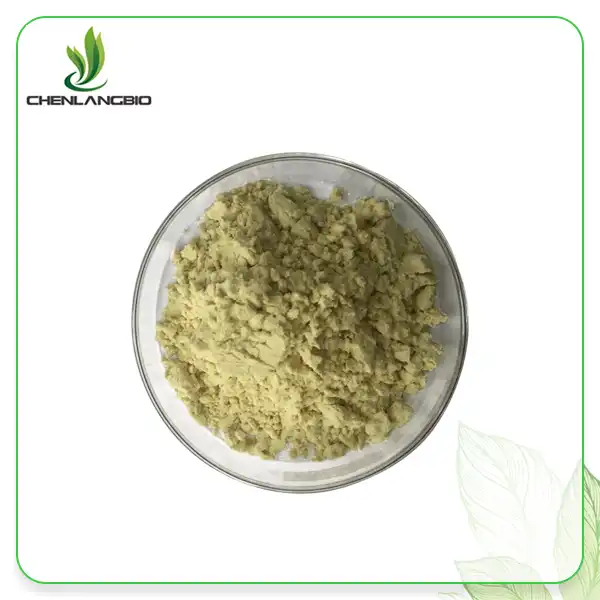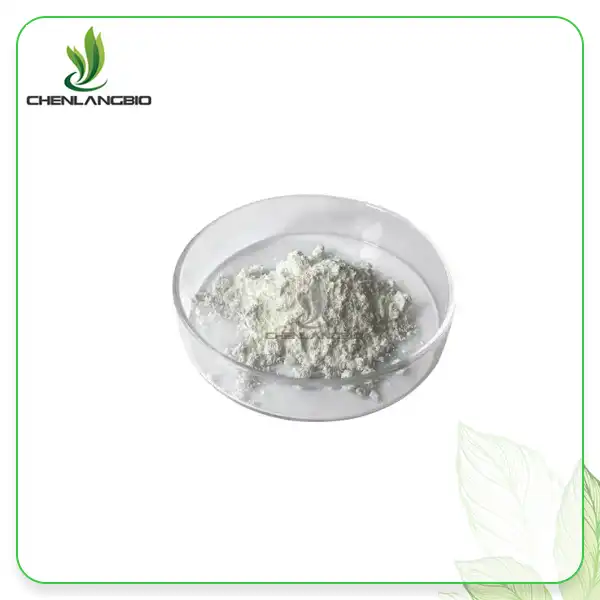Saw Palmetto Extract vs Finasteride: Which Is Better for Hair Loss?
2025-11-04 14:20:11
Saw palmetto extract and finasteride are two of the most discussed solutions for hair loss, each targeting the same hormonal cause — excessive Dihydrotestosterone (DHT) — but through very different mechanisms. These two ingredients dominate the modern hair health market, appearing across prescription treatments, dietary supplements, and professional hair-care formulations.
While finasteride is a pharmaceutical standard with strong clinical efficacy, Saw Palmetto Extract (Serenoa repens) offers a natural alternative increasingly preferred by consumers and supplement manufacturers seeking plant-based DHT blockers.
Hair loss itself isn’t only a cosmetic issue — it affects self-image, confidence, and emotional well-being. For millions of men and women, androgenetic alopecia (pattern hair loss) is both a biological and psychological challenge. Understanding how Ssaw palmetto and finasteride differ in potency, safety, and application helps consumers, nutraceutical formulators, and OEM supplement developers select the right path for effective, marketable hair-growth solutions.
Understanding DHT and the Biology of Hair Loss
To appreciate how both finasteride and saw palmetto function, it’s essential to understand the DHT pathway. DHT is a potent androgen derived from testosterone through the action of 5-alpha-reductase (5αR) enzymes, mainly the Type I and Type II isoforms. DHT binds to androgen receptors in hair follicle cells, triggering a cascade that leads to shorter growth phases (anagen) and longer resting phases (telogen). Over time, follicles shrink and produce thinner, weaker hair — a process known as miniaturization.
Finasteride selectively inhibits Type II 5αR, found in the prostate, scalp, and hair follicles, leading to a 60–70% reduction in circulating DHT. Saw palmetto, by contrast, exerts a broader but milder influence, partially inhibiting both Type I and Type II 5αR and additionally modulating inflammatory and oxidative pathways that contribute to follicular degeneration.
This distinction — strong single-enzyme inhibition versus gentle multi-pathway regulation — forms the foundation of their clinical differences.
Mechanism of Action: Pharmacological vs. Botanical Modulation
Finasteride: Targeted Enzyme Suppression
Finasteride’s mechanism is straightforward and highly specific. By competitively inhibiting 5αR Type II, it prevents the conversion of testosterone to DHT in tissues where that enzyme predominates. Serum DHT levels drop significantly within weeks of treatment, and hair follicles exposed to reduced androgen signaling often recover normal growth cycles.
Clinical studies consistently show improvements in hair count and scalp coverage after three to six months of use, with continued gains up to one year. Finasteride’s precision, however, comes with systemic consequences: it alters androgen balance throughout the body, not just in the scalp. That global suppression explains both its potency and its side-effect profile.
Saw Palmetto Extract: Lipid-Phytosterol Synergy
The berries of Serenoa repens contain a complex mixture of free fatty acids (lauric, oleic, myristic, palmitic) and phytosterols (β-sitosterol, campesterol, stigmasterol) — compounds that collectively inhibit 5αR activity, limit DHT binding to androgen receptors, and reduce local inflammation.
Unlike finasteride, saw palmetto’s action is self-limiting; it modulates rather than abolishes 5αR function. Furthermore, its antioxidant and anti-inflammatory effects may protect the perifollicular environment, improving vascularization and nutrient delivery to hair bulbs. In vitro data suggest it also decreases prostaglandin D₂ levels, a local inflammatory mediator associated with hair loss progression.
The cumulative result is slower DHT-induced miniaturization, reduced shedding, and an improved scalp microenvironment that favors regrowth.
Comparative Clinical Evidence
Finasteride: Strong Evidence from Controlled Trials
Since its approval in the 1990s, finasteride (1 mg daily) has been validated in multiple randomized, placebo-controlled studies. The landmark 5-year trials demonstrated that 83% of treated men maintained or increased hair count, compared with 28% in the placebo group. Phototrichogram analyses confirm a significant increase in terminal hair density and thickness, particularly on the vertex and mid-scalp regions.
However, the benefits plateau with time and require continued use. Discontinuation typically leads to renewed miniaturization within 12 months.
Saw Palmetto Extract: Emerging but Promising Data
Although smaller in scale, several well-designed studies support saw palmetto’s efficacy. In a double-blind trial published in The Journal of Alternative and Complementary Medicine, 60% of participants receiving a 320 mg lipid extract experienced visible hair growth improvement after 24 weeks — less dramatic than finasteride’s effect but meaningful for a botanical.
A 2020 review in International Journal of Immunopathology and Pharmacology concluded that saw palmetto “may represent a viable therapeutic option for mild to moderate androgenetic alopecia,” especially for patients who cannot tolerate finasteride.
Importantly, studies combining saw palmetto with nutritional cofactors (zinc, biotin, vitamin E, and pumpkin seed oil) have shown synergistic effects, highlighting the advantage of multi-component nutraceutical formulations.
Safety and Tolerability
Finasteride: Systemic Risks and Endocrine Sensitivity
Finasteride’s major drawback lies in its systemic hormonal impact. Because DHT plays physiological roles in sexual function and mood regulation, its suppression can lead to reduced libido, erectile dysfunction, ejaculatory changes, and mood disturbances in a small but significant subset of users. These effects are generally reversible, but persistent cases have been reported, particularly after prolonged use.
Finasteride is also contraindicated for women who are pregnant or may become pregnant, due to the risk of fetal abnormalities. Long-term hormonal suppression raises theoretical concerns about neurosteroid balance, though clinical significance remains debated.
Saw Palmetto Extract: Gentle Profile, High Compliance
In contrast, saw palmetto is well tolerated by most individuals. Clinical studies and long-term observational data (up to 24 months) report only mild side effects such as digestive discomfort or transient headache. The extract does not significantly affect serum testosterone or PSA levels, suggesting minimal systemic hormonal disruption.
Its gentle profile makes it suitable for both men and women, and for prolonged daily use. The U.S. National Center for Complementary and Integrative Health classifies saw palmetto as “likely safe for most adults” when used at standard doses (160–320 mg/day of standardized extract).
Practical Comparison for Brands and Buyers
1. Efficacy
Finasteride leads in measurable regrowth, but saw palmetto provides meaningful results for natural product consumers and hair supplement brands seeking botanical positioning.
2. Safety
Finasteride’s adverse effects limit its use for general consumer products. Saw palmetto offers a non-prescription, safe, and gender-neutral option, ideal for over-the-counter and e-commerce markets.
3. Market Potential
Finasteride: Restricted to pharmaceutical use.
Saw Palmetto: Rapidly growing in the nutraceutical, personal care, and cosmetic industries, with strong demand from hair supplement OEMs, private-label brands, and raw-material importers.
4. Consumer Demand
Search volume and industry data show increasing preference for “natural DHT blockers” and “plant-based hair growth supplements.” This trend favors saw palmetto extract powder or oil as a key ingredient in commercial formulations.
Combining Efficacy and Safety: The Hybrid Model
Emerging studies suggest that combining topical finasteride (at low doses) with oral saw palmetto extract or pumpkin seed extract may produce additive effects while minimizing systemic risk.
In supplement formulation, blending saw palmetto with:
Zinc – inhibits DHT conversion and supports keratin synthesis.
Vitamin B-complex and biotin – essential for follicular metabolism.
Curcumin or resveratrol – reduces oxidative stress in the scalp.
Hyaluronic acid and tocopherols – improve microcirculation and follicle hydration.
Such synergistic formulations create premium, functional hair-growth products with verifiable mechanisms, perfect for OEM supplement manufacturing, contract formulation, or white-label export.
Cost and Accessibility
Finasteride is available only by prescription in most regions, typically costing USD $15–30 per month for generic versions. Medical supervision and periodic evaluations are recommended, particularly for men over 40.
Saw palmetto extract, in contrast, is available over-the-counter as capsules, oils, or powders. High-quality standardized extracts (e.g., supercritical CO₂-extracted, ≥80 total fatty acids) generally cost less than $20–30 per month at clinically relevant dosages.
For manufacturers and brand owners, sourcing matters: extracts produced through supercritical CO₂ extraction yield higher concentrations of biologically active lipids and lower solvent residues, making them preferable for premium nutraceuticals or hair-growth blends.
Which One You Should to Choose about Saw Palmetto Extract and Finasteride
|
User Type |
Recommended Option |
Rationale |
|
Men seeking fast, clinical regrowth |
Finasteride |
Strongest DHT suppression; medical-grade efficacy |
|
Men or women preferring natural, long-term care |
Saw Palmetto Extract |
Safe, multi-pathway mechanism suitable for all genders |
|
Supplement brands / OEM manufacturers |
Saw Palmetto Extract |
Scalable, regulatory-friendly ingredient for clean-label formulations |
|
Sensitive users or those avoiding hormonal drugs |
Saw Palmetto Extract |
Excellent tolerability and minimal endocrine disruption |
High Quality Saw Palmetto Extract Manufacturer in China
As a high quality bulk saw palmetto extract supplier, CHEN LANG BIO TECH provides HPLC-verified saw palmetto extract powder standardized for fatty acid content, ensuring batch consistency for hair supplement and men’s health formulations. Here is our powder advantages:
|
Quality Criterion |
Recommended Specification |
|
Extraction Method |
Supercritical CO₂ preferred |
|
Active Components |
≥25–80% total fatty acids (UV verified) |
|
Key Actives |
Lauric, oleic, myristic, palmitic acids; β-sitosterol |
|
Analytical Methods |
HPLC |
|
Certifications |
ISO, HALAL, KOSHER, HACCP, FDA registered |
|
Physical Form |
White powder |
|
Solvent Residue |
<0.5% (ethanol-based acceptable) |
Please send inquiry to Email: admin@chenlangbio.com if you want to buy saw palmetto extract powder online.
Conclusion
Finasteride remains the gold standard for pharmacological DHT suppression and visible regrowth in androgenetic alopecia. However, its systemic side effects and prescription-only status restrict its reach.
Saw palmetto extract, on the other hand, provides a balanced, natural, and consumer-friendly alternative that supports both scalp health and hormonal balance. It fits perfectly into the fast-growing nutraceutical, cosmeceutical, and hair wellness markets, especially for brands seeking to create high-quality, plant-based formulations.
When standardized properly and combined with complementary nutrients, saw palmetto extract powder represents one of the most commercially valuable and scientifically credible ingredients in modern hair growth solutions.
To be a bulk and wholesale saw palmetto extract supplier, we can supply all documents about it, for more information such as COA, MSDS, HPLC data, now please contact our email: admin@chenlangbio.com
References
Prager N. J Altern Complement Med. 2002;8(2):143–152.
Rossi A, et al. Int J Immunopathol Pharmacol. 2012;25(4):1167–1171.
Caruso D, et al. Front Pharmacol. 2020;11:527484.
NCCIH, “Saw Palmetto: What You Need to Know.” 2024.
Wessagowit V. Australas J Dermatol. 2019;60(2):142–147.
Andriole GL. J Urol. 2004;172:1399–1403.
Send Inquiry
Related Industry Knowledge
- Is Shilajit Good for Pennis?
- Choosing the Best Podophyllin Powder Supplier
- Is Resveratrol Effective for Anti-Aging?
- Saccharomyces Ferment Lysate: The Ultimate Guide
- What is the Internal Version of Dimethylmethoxy Chromanol
- Is Praziquantel Safe for Humans
- What Is The Use Of Permethol
- What Are The Benefits Of Using Hyaluronic Acid Powder
- What is Phenylethyl Resorcinol in Skin Care
- Dimethylmethoxy Chromanyl Palmitate For Skin










